- Home
- Content Library
Content Library

Keeping Your Patient Data Off the Dark Web
The surge in data breaches over the last few years has turned the spotlight towards previously hidden, dark web networks, bringing them out of the shadows and into public discussion. Taking steps to secure and reduce your available sensitive information can help prevent your patient data from becoming the next records for sale on the dark web. The dark web, once hidden is becoming more widely publicized. However, despite this exposure, the dark web remains the premier location for selling stolen digital goods to this day. Unless you have a focus on internet security, you may not be familiar with the dark web. It’s a name given to corners

Refitting a Practice with Software that Fits
When we took over a dental practice in the trendy University Village neighborhood of Seattle, we knew we had to make it state-of-the-art. Our office is a few blocks from the University of Washington, so we serve patients who work at UW and many who work for Boeing, Microsoft, Amazon and other high-tech companies in the area. Our patients are very tech savvy, and they expect advanced techniques at the peak of today’s dentistry. That’s exactly what we wanted to deliver. However, the software we inherited with the practice didn’t meet our needs. We had an ideal location and up-to-date office furnishings, but the software didn’t fit the

CBCT and Digital Scanning for the Implant Workflow
HOW DIGITAL TECHNOLOGIES SAVE TIME, LEADING TO GREATER EFFICIENCY AND PROFITABILITY For me, the digital workflow in implant dentistry requires two primary systems—CBCT and an intraoral scanner. With those data sets, you have all the information you need to create custom, screw-retained temporaries and healing abutments, and the surgical guide. You can prosthetically plan the implant placement so you know exactly what you need and where it has to go. The true digital workflow means starting the diagnostic process with CBCT, then using digital intraoral scanning, 3D printing, and CAD/CAM milling—all the while moving the process along thanks to integrated software. We are also working with a lab that uses

Company Spotlight - Midmark Corporation
How can a company with over 100 years of manufacturing experience be so refreshingly different from the rest? For Midmark Corporation, “experience” says it all. Founded in Minster, Ohio, in 1915 as the Cummings Machine Co., Midmark has a rich history of manufacturing and product leadership that has been solely focused on the health care market since the 1970s. Today, Midmark is made up of more than 1,800 teammates across nine domestic sites and two international locations who provide solutions to the medical, dental, and animal health markets. Dr. Anne Eiting Klamar, Chair of the Board of Directors, claims a long history with the company. A medical doctor, Dr.

The Basics of CAD/CAM Dental Milling
CAD/CAM technology has helped to transform the manner in which restorative treatment can be provided. In particular, the ability to provide patients with single-visit indirect restorations is appreciated by clinicians and patients. Chairside milling produces restorations that are at least as accurate as traditionally fabricated indirect restorations. Chairside milling also allows clinicians to optimize the process flow, reducing chairside time, increasing efficiency, and saving patients additional visits. As with other procedures, each step must be accurately performed. Once the learning curve has been mastered, chairside milling provides an accurate method to provide patients with efficient and aesthetic restorative care. INTRODUCTION TO CAD/CAM DENTISTRY CAD/CAM has become mainstream and has changed dentistry, particularly in the fields of restorative and implant dentistry. Single-unit crowns are the most frequently provided indirect restoration,

How to Choose the Right Intraoral Scanner
Choosing an intraoral scanner is like picking out the right pair of running shoes - you look for a pair that matches your style of running and then try them on to see if they're the best fit. It's the same with intraoral scanners - you need to find the best fit and support for your needs. The difference? These 'shoes' can cost up to $50,000. So, we asked Henry Schein Dental's Product Category Manager for Digital Restorations, Tyler Steck, to walk you through the top 10 considerations when choosing an intraoral scanner. Manufacturer. Research products from all the major manufacturers: How long has each scanner been around? How

The Power of Color
What’s the style of your office? Are the furnishings classic, transitional, or modern? Does the layout support efficient traffic flow? So many design elements affect the feeling of an environment, from layout and aesthetics to decorating style. But without a doubt, one of the biggest components is color. Color is a powerful design tool that has an impact on influencing emotion, mood, and even physiological reactions. Specific colors can make us feel warm, relaxed, nervous, or calm. As such, the color choices in your dental office can affect not only your patients, but your staff as well. While there are many nuances to consider, from hue and tint

What Matters to Patients?
You might be the most precise, well-liked, and well-educated dentist, but if your patients do not feel comfortable they’re not likely to return, or worse, they’ll reconsider seeking dental care altogether. For some, fear has become a routine part of the dental experience. Although this fear is unique to each patient, similarities can be seen from case to case. The question then becomes, what matters most when patients go to the dentist? Here we will explore this question and look at 4 concerns likely in the minds of your patients. 1. Timing Your patients might like you, but that doesn’t mean they like visiting the dentist. For reasons beyond

A report on a diagnostic digital workflow for esthetic dental rehabilitation using additive manufacturing technologies
Summer 2018 | Marta Revilla-León, José Luis Sánchez-Rubio, Adriana Besné-Torre, Mutlu Özcan The digital workflow—from the intraoral scanning, through the CAD design of the facially generated diagnostic digital wax-up, to the CAD-designed and 3D printed silicone index with the diagnostic mock-up—provides a new approach that avoids the conventional manufacturing of casts. Download the full article
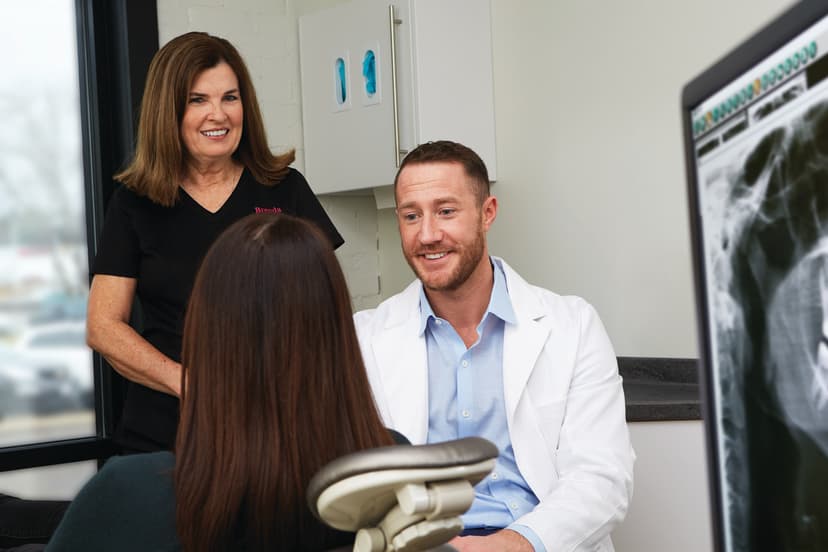
Increase in New Patient Flow and Referrals
What is the greatest challenge a dentist faces today with their practice? In face-to-face conversations we have asked more than 7,500 dentists that very question. The overwhelming response (2 to 1) was new patient flow. A healthy practice should be seeing an average 25 new patients per month per doctor and should strive to have these be fee-for-service patients. Yet many dentists are seeing just a fraction of that number and participation in PPOs are on the rise. The thought of proactively marketing your practice often brings a negative connotation to mind. It was not that long ago that marketing was actually looked down on and the common thought

Connecting Elements: Ergonomics, Efficiency and Office Design
By: Jacqueline Russo, RN, DDS Introduction Dentistry in the 21st century can be both rewarding and demanding. Dental professionals work in a complex environment that requires high clinical skill levels and staff with high levels competency. Consideration must be given to ergonomics, and long and complex procedures require great attention to detail. In addition, high patient expectations need to be met, and staff and patient management must occur. There are also the demands of running a small business. Time pressures may also result from the drive to (over) maximize efficiency for productivity and profitability.1 The word ‘ergonomics’ is derived from the word ‘ergo’ for work and ‘nomos’ for natural laws or

Same-Day Crowns with the True Definition Scanner and Planmeca PlanMill
The evolution of digital scanning technologies paired with chairside milling continues to be a popular topic in dentistry, but many dentists have concluded that the available devices are too expensive or too impractical for their offices. The Midmark True Definition Scanner has the potential to change that. This technology makes digital scanning more affordable than ever before. The True Definition Scanner provides a number of key features that make it easy to implement in the office and flexible for many workflows. This versatility, combined with the system’s low price, make this scanner a very exciting development. The system uses an open and secure cloud-based platform to connect with other systems,
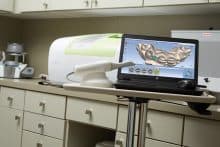
Digital Dentistry: The Best Care Available!
It was a cold blustery day in Chicago at the 1997 Midwinter meeting, but I was excited! I was moving into digital dentistry, purchasing my first CAD/CAM system to produce same-day restorations. My plan was to cut lab costs and overhead while delivering a convenient quality product to my patients and practice–the proverbial “win-win” situation. Indeed, I reduced my lab bills, and used the improved cash flow to help finance my dream office and building. However, the CAD/CAM equipment and materials from 20 years ago had some shortcomings. With a lot of hard work, study, and effort, I provided good restorations to my patients, but I wanted lab

Swimming with the Sharks: An Introduction to In-House Discount Plans
Approximately 11 PPO plans are sold for each indemnity (fee-for-service) plan sold, putting significant pressure on dentists to join PPOs. Often doctors join the PPO network without determining whether the practice can make it work. Because of overhead and large contractual write-offs, it may actually lose money on some PPO patients. What can a doctor do to “swim with the sharks” and not be devoured? Consider reaching out to the relatively untapped uninsured market. Statistics show that 50% of adults do not have dental coverage, and yet, they still need high-quality dental care. One way to provide them with this service is by offering them an alternative that helps
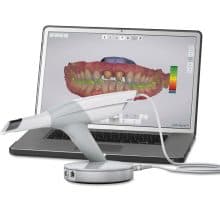
Digital Impressioning Helps Me Be a Better Dentist
Dr. Simon Kold, from Herning Implant Center, has worked with the 3Shape TRIOS scanner since 2011, and for him, there can be no going back to traditional impression taking. Dr. Kold believes that his preparations and final results have improved significantly since he started working with TRIOS. The technology has taken his business to new heights. “Intraoral scanning helps me give patients better dental treatment.” says Dr. Kold. What made you move from traditional impression taking to digital impressioning? Our clinic has been working with guided implant surgery since 2005. With the emergence of new technologies, we saw potential combining digital impressions with CBCT scans to ensure accurate and

The Tax Deductions That Many Dentists Miss
As accountants who specialize in working with dentists, our firm often has the opportunity to review prior tax returns for potential new clients. Through all of these reviews, I’ve noticed a pattern of missed deductions and opportunities to save taxes. The problem is that too many dentists don’t know the right questions to ask their tax professionals, leaving opportunities overlooked. Here are some of the most common ones I’ve seen: 1. Failure to Use S-Corp Tax Status, or Properly Plan Distributions For many doctors, an S-corp can save a significant amount of tax. However, many dentists are holding on to old C-corps, or never created the corporation or

Writing Narratives That Will Result in Reimbursement
It is no fun to write a narrative. It takes an extensive knowledge of the procedure and what the plan is looking for as justification for the treatment provided. It also takes time, and time is one commodity that the typical dentist has little to spare. This article will take a close look at the construction of narratives. It will identify some of the challenges to writing a narrative. Finally, the article will provide information that will allow the dentist to prepare a narrative in such a way that the claim is paid or pre-determination is approved on first submission. Here is a list that contains some frequent

New Dental X-Ray Guidelines: How They Will Affect Your Practice
INTRODUCTION In October, we published a report outlining the potential impact of the National Council on Radiation Protection’s new guidelines, as detailed in the NCRP’s Report #145 and published in Dentistry Today.1 In this article, we identify a simple, economical approach and product that will help dentists conform to some of these guidelines. Readers are invited to refer to the article cited above for even more details. The NCRP “…is a nonprofit corporation chartered by Congress in 1964 to: 1. Collect, analyze, develop, and disseminate in the public interest, information and recommendations about (a) protection against radiation and (b) radiation measurements,
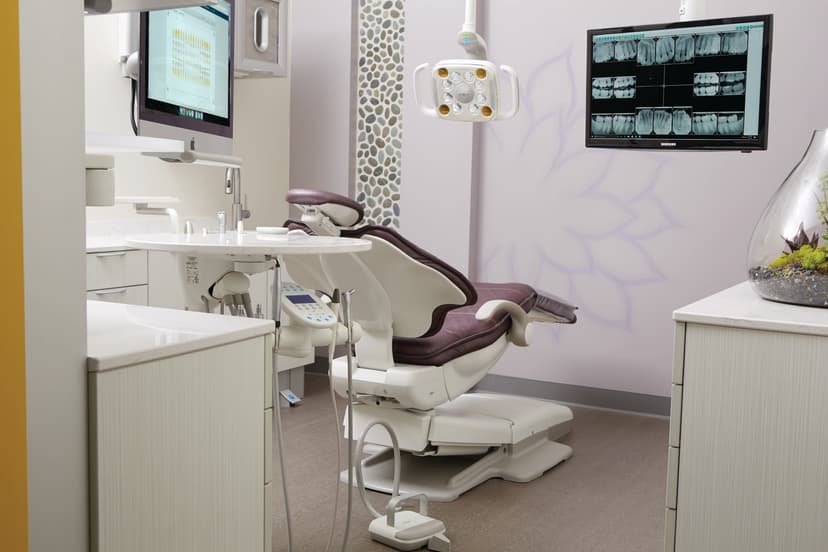
The True Cost of Dental Equipment
To get your money’s worth, look beyond the price tag. If you’re feeling pressure to get the most out of your equipment budget, it can be tempting to hone in on price alone when making a purchase. But as many have learned the hard way, “low price” and “excellent value” aren’t necessarily the same thing. Saving a few dollars up front may not be the best decision for your practice. Total cost of ownership The true cost of dental equipment goes beyond the purchase price. A-dec calls it the “total cost of ownership.” Think of it this way: Cost of acquisition + Cost of operation + Cost of maintenance

The Hidden Cost of Your Time
When it comes to the ROI of Indirect Restorations, consider both the tangible and intangible costs. We dentists have to start understanding that our time is the most valuable and expensive asset we have. We tend to believe that personnel, materials, and supplies are expensive—but when you boil it down, it’s really a matter of time itself being the best return on investment (ROI) in terms of our productivity. This concept should be applied to patients as well; ultimately, we have to value their time more than anything. The average patient takes about 3 hours off work for a dental appointment, so the more times they have to

Laser Technology 101
Technology continues to change how we practice, and although many of the basic concepts dentists have learned while in dental school are still relevant, the dental office of today is unrecognizable from 25 years ago. Composites were in their infancy, gold was still being pounded into teeth, curing lights, lasers, and implants were almost unheard of. Radiographs were taken and developed by traveling through a machine full of developer and fixer. No one would deny that dentistry has changed dramatically and technology has made patient care easier, faster, and more predictable. Post Ortho Gingival Hyperplasia, if left untreated, can lead to decalcification, caries, and esthetic concerns. One technology that has
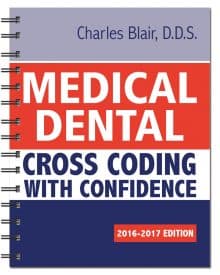
Billing Medical for Cone Beam Computed Tomography (CBCT)
Cone beam technology is becoming the standard of care for certain dental procedures. Many patients request doctors to submit the cost to their medical plan. There are three Current Procedural Terminology (CPT) medical codes available to report CBCT. 1. The code 70486 reports the image capture and interpretation. 70486 Computed tomography, maxillofacial area; without contrast material. Henry Schein item code: 368-2213. When only image capture or interpretation is provided, it is reported with the appropriate modifiers listed below: TC Technical component (i.e., image capture only) 26 Professional component (i.e., interpretation only) 1. 76376 3D rendering with interpretation and reporting of computed tomography, magnetic

Guided Implant Placement Supported by CEREC®
Recent advances in technology have made implantology an increasingly attractive treatment option for both dentists and patients. For patients, CEREC technology and 3D imaging have been instrumental for increased treatment plan acceptance by providing a detailed overview of their specific procedure. Dentists who use a CEREC and a 3D Imaging System can expand their treatment capabilities by seamlessly integrating implants into their practice in four steps: Scan, Plan, Place, Restore. 1. Scan Capture highly detailed X-ray images of your patient’s mouth from many different angles and levels of magnification using a 3D imaging system. This degree of flexibility makes for a much easier planning phase of the implant procedure by

Panoramic Radiography
It is a technique that produces an image of the teeth and jaws on a single film, but it also depicts a somewhat bewildering array of hard and soft tissues in the head and neck. Some of these structures are also seen on intraoral radiographs but appear different on panoramic films, whereas other landmarks are found on panoramics but not intraoral films. Because of the unique physical nature of panoramic image formation, some structures are projected in areas of the film where they don’t exist. Although dentists may concentrate only on the teeth and their supporting tissues when examining panoramic radiographs, they should also be able to identify anatomic